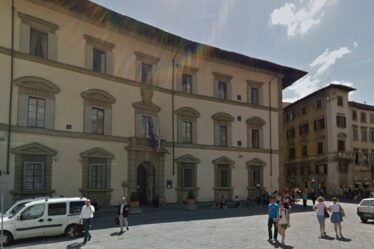

Parish priest of the church of San Cresci in Macioli, near Pratolino, was famous for the stories he told, for the brazenness of his gestures and the veined malice of a breath -free spirit. A character loved by the people for his good – frankness natures, he was sometimes a problem for the bishop’s Curia, lined up at the time by Pio Antonino Pierozzi who tried to redeem him without success.
It is portrayed in several paintings, even in the following centuries, to testify to its lasting city fame. For example, a pitched of Pievano Arlotto is a seventeenth -century picture of the Volterrano while a portrait of the facetious parish priest is the work of Giovanni da San Giovanni, both kept at the Palatine Gallery of Palazzo Pitti.
After his death, an unknown friend published in the second half of the fifteenth century a volume entitled The Motti and Facezie of Piovano Arlotto, who gives a vivid portrait from the bottom of the Florentine countryside in the era of Lorenzo the Magnificent, in which the facetious register and, For today’s reader, rather vulgar, however, the authentic and human traits of these priest jokes does not suffocate.
An example of curious vicissitudes linked to this figure is that of the attempted redemption of the Armotto: one day the archbishop, worried about the habit of the Armotto to attend the taverns, invited him to the canteen of the archbishopric to bring him back to a more suitable table to a priest. But since the Pievano Arlotto, every day he brought new and more and more numerous friends to the said canteen, the archbishop was forced to let go of the piervano to eat and drink where more was welcome.
Another time, in a night of heavy rain, returning from the Casentino, he stopped, completely wet, in a small tavern near the consummation which was full of people and it was impossible even just approaching the places next to the fire, all already employed. Then he turned to the innkeeper with the tone of those who want to speak privately, but also to be understood by everyone, telling the misadventure of having lost from the “carniere” “money bag”, where he had stopped to urinate to some miles from there, the beautiful sum of fourteen lire and nineteen florins. Gradually, in small groups, the diners offered to go out to look for the coins and our pievano not only could he refresh himself beautifully wide to the fire but, for the compassion of the Osa, he also didn’t paid any thing for the hospitality and food.
As an elderly he found hospitality in the hospice for old parish priests (said of the Pretons) who was based at the current oratory of Jesus Pellegrino in Florence



